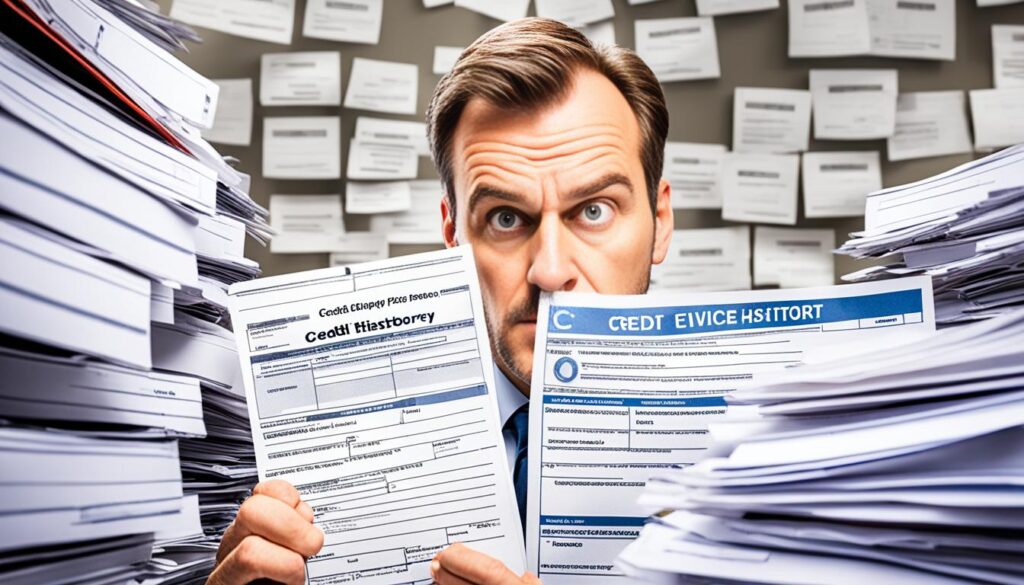Are you tired of seeing inaccurate information on your credit report holding you back from achieving your financial goals? Do you feel like you’re fighting an uphill battle when it comes to disputing these errors with creditors? If so, you’re not alone. Many people struggle with the frustrating and time-consuming process of factual dispute letter writing, but the truth is that you have more power than you might think. By crafting a winning factual dispute letter, you can take control of your credit and set yourself up for a brighter financial future. In this comprehensive guide, we’ll walk you through proven strategies and expert tips for creating a credit dispute letter that creditors can’t ignore.
Key Takeaways
- Understand the importance of accurate credit reports and the impact of errors on your financial opportunities.
- Learn how to gather supporting documentation to strengthen your credit dispute case.
- Discover the art of being specific and concise in your credit dispute letter.
- Know your rights under the Fair Credit Reporting Act (FCRA) and leverage them effectively.
- Explore the best dispute methods, including direct disputes with creditors and indirect disputes through credit bureaus.
- Develop a strategic follow-up plan to ensure your dispute is addressed promptly and effectively.
- Streamline the process with client dispute management software to save time and improve outcomes.
The Power of Factual Disputing for Credit Repair
Your credit report is the cornerstone of your financial well-being, a virtual financial resume that can open doors or shut them tight. Unfortunately, errors on credit reports are all too common, with a study by the Federal Trade Commission revealing that one in five consumers had an error on at least one of their credit reports. These inaccuracies can have a devastating impact on your credit score, making it harder to secure loans, housing, or even employment opportunities.
Understanding the Importance of Accurate Credit Reports
Maintaining an accurate and up-to-date credit report is crucial for boosting credit scores and managing your financial future. Errors on your credit report can include incorrect account information, mistaken identity, or even fraudulent activity. These credit report errors can lead to a lower credit score, which can in turn restrict your access to credit, loans, and other financial opportunities.
The Impact of Credit Report Errors on Financial Opportunities
Inaccurate information on your credit report can have far-reaching consequences, limiting your ability to achieve your financial goals. A lower credit score can make it challenging to secure a mortgage, rent an apartment, or even land a job that requires a credit check. By actively disputing credit errors and ensuring the accuracy of your credit report, you can take control of your financial destiny and unlock new opportunities for personal and professional growth.
“Maintaining an accurate credit report is essential for building a strong financial future. By proactively addressing errors, you can ensure that your credit score truly reflects your responsible financial behavior.”
Empowering yourself with credit monitoring best practices and a deep understanding of the Fair Credit Reporting Act can help you navigate the credit repair process and achieve the financial success you deserve. Remember, your credit report is a powerful tool, and by taking charge of its accuracy, you can unlock a world of debt management techniques and financial literacy resources to help you thrive.
Gather Supporting Documentation
Crafting a winning credit dispute letter begins with gathering the necessary supporting documentation. This critical step provides the evidence to back up your claims, making it harder for creditors to dismiss your dispute. Start by obtaining copies of your credit reports from the three major bureaus – Equifax, Experian, and TransUnion. Carefully review these reports for any inaccurate or incomplete information that you can address in your dispute letter.
Gather any documentation that supports your dispute, such as:
- Proof of identity
- Billing statements or receipts
- Correspondence with creditors or collection agencies
- Court documents
Having this documentation organized and readily available will streamline the disputing process and increase your chances of success. Thorough preparation is key when it comes to disputing credit errors and boosting credit scores through the Fair Credit Reporting Act compliance.
| Recommended Documentation | Purpose |
|---|---|
| Credit reports from Equifax, Experian, and TransUnion | Identify inaccuracies or incomplete information to dispute |
| Proof of identity (e.g., driver’s license, passport) | Verify your identity and prevent identity theft |
| Billing statements, receipts, and correspondence | Provide evidence to support your credit dispute claims |
| Court documents (if applicable) | Demonstrate legal actions or resolutions related to your case |
By gathering this supporting documentation, you’ll be well-equipped to navigate the credit bureau communication and credit dispute letter follow-up strategies with confidence, ultimately boosting your credit scores and managing your debt more effectively.

Be Specific and Concise in Your Credit Dispute Letter
Crafting an effective credit dispute letter is a crucial step in the credit repair process. When it comes to disputing credit errors, clarity and concision are key. By being specific and to-the-point in your letter, you can increase the likelihood of a favorable outcome and help boost your credit scores.
To ensure your credit dispute letter is as effective as possible, follow these guidelines:
- Clearly identify each item you are disputing. Provide the account number, creditor name, and a brief description of the error you’ve identified.
- Explain why you believe the item is inaccurate or unverifiable. Stick to the facts and avoid emotional language.
- Request that the credit bureau or creditor investigate the disputed item and remove it from your credit report if it is found to be erroneous.
- Include any supporting documentation that can help substantiate your dispute, such as payment records or correspondence with the creditor.
- Keep your letter focused and concise, using short, straightforward sentences that convey your message effectively.
By following these best practices, you can craft a credit dispute letter that is clear, compelling, and more likely to result in the successful resolution of your credit issues. Ultimately, this can lead to improved credit scores and increased financial opportunities down the line.
| Credit Dispute Letter Best Practices | Avoid These Mistakes |
|---|---|
|
|
By following these best practices and avoiding common pitfalls, you can craft a credit dispute letter that is more likely to result in the successful resolution of your credit issues, ultimately helping to boost your credit scores and open up new financial opportunities.
“The key to a successful credit dispute is to be as clear and concise as possible. Stick to the facts, and make it easy for the creditor or credit bureau to understand and address your concerns.”
Understand Your Rights Under the Fair Credit Reporting Act (FCRA)
When it comes to credit dispute letter follow-up strategies, it’s crucial to understand your rights under the Fair Credit Reporting Act (FCRA). This federal law gives consumers the power to protect their credit repair tactics and dispute any credit errors that may be dragging down their credit scores.
Under the FCRA, you have the right to:
- Dispute inaccurate or incomplete information on your credit report
- Have the credit bureau investigate your dispute within 30 days
- Receive a copy of the investigation results and a corrected credit report if changes are made
- Have the creditor provide evidence to support the accuracy of disputed information
- Have inaccurate or unverifiable information removed from your credit report
By familiarizing yourself with these consumer credit rights and citing them in your credit dispute letter, you demonstrate your knowledge of the FCRA and your commitment to boosting credit scores through legitimate debt management techniques. This can give you a stronger negotiating position when communicating with credit bureaus and creditors.
“Knowing your rights under the FCRA is the first step towards taking control of your financial future and protecting your credit monitoring best practices.”
Embrace the power of the FCRA and use it to your advantage in your credit dispute letter follow-up strategies. With the right knowledge and approach, you can effectively dispute credit errors and take the necessary steps towards financial literacy resources and a healthier credit bureau communication.

Choose the Right Dispute Method
When it comes to credit dispute letter follow-up strategies, there are two primary approaches to consider: direct dispute with the creditor and indirect dispute through the credit bureaus. Understanding the nuances of each method can help you disputing credit errors and boosting credit scores more effectively.
Direct Dispute with the Creditor
The direct dispute approach involves contacting the creditor directly to address any credit report errors. This method gives the creditor an opportunity to investigate the issue and correct any inaccuracies before the information is reported to the credit bureaus. By taking this proactive step, you can often resolve the problem quickly and avoid the need for a more lengthy credit bureau communication process.
Indirect Dispute Through Credit Bureaus
If the creditor fails to respond or does not resolve the issue, you can then escalate the dispute to the credit bureaus. This indirect method involves submitting a formal credit dispute letter to the respective bureaus, outlining the consumer credit rights violations and providing any supporting documentation. The bureaus are then required to investigate the dispute and report their findings back to you within a specific time frame, as outlined in the Fair Credit Reporting Act (FCRA).
Regardless of the approach you choose, it’s essential to follow up on your credit dispute letter and be prepared to escalate the issue if necessary. Maintaining detailed records of all correspondence and credit monitoring best practices can be invaluable in ensuring a successful resolution and debt management techniques.
| Dispute Method | Advantages | Disadvantages |
|---|---|---|
| Direct Dispute with Creditor |
|
|
| Indirect Dispute Through Credit Bureaus |
|
|
By understanding the strengths and limitations of each credit repair tactics approach, you can make an informed decision on the most effective strategy for your specific financial literacy resources and credit monitoring best practices.

Follow Up and Escalate If Necessary
Crafting a compelling credit dispute letter is just the first step in the journey to reclaiming your financial reputation. To ensure a successful outcome, it’s crucial to follow up with the creditor or credit bureau and escalate the dispute if necessary. After sending your credit dispute letter, be patient and wait 30 days for a response. If you don’t receive a timely response or the response is unsatisfactory, it’s time to take further action.
Here are some effective strategies to follow up and escalate your credit dispute:
- Send a follow-up letter: Reiterate your dispute, request a resolution, and emphasize your rights under the Fair Credit Reporting Act (FCRA).
- File a complaint with the Consumer Financial Protection Bureau (CFPB): This federal agency can intervene on your behalf and help ensure your credit dispute is properly addressed.
- Consult a consumer protection attorney: If your dispute remains unresolved, consider seeking legal counsel to explore your options for enforcing your consumer credit rights.
“Persistence is key when it comes to protecting your credit through credit disputing. Don’t be afraid to stand up for your rights and keep pushing until you achieve a satisfactory resolution.”
Remember, credit dispute letter follow-up strategies play a crucial role in boosting your credit scores and maintaining the accuracy of your credit reports. By staying vigilant and asserting your consumer credit rights, you can overcome any credit bureau or creditor roadblocks and achieve the financial empowerment you deserve.

Streamline the Process with Client Dispute Manager Software
While implementing the credit dispute letter follow-up strategies and credit repair tactics discussed earlier can significantly improve your chances of successfully disputing credit report errors and boosting your credit scores, managing the entire process can still be time-consuming and challenging, especially if you’re dealing with multiple disputes. This is where Client Dispute Manager Software can be a game-changer.
Client Dispute Manager Software is designed to streamline the credit disputing process, making it easier for you to track your disputes, communicate with creditors and credit bureaus, and ensure that your disputes are resolved in a timely manner. With features like automated credit dispute letter generation, deadline tracking, and comprehensive reporting, this software can help you save time and stay organized throughout the credit disputing journey.
Whether you’re an individual looking to improve your personal credit or a business owner seeking to help your clients navigate the complex world of credit disputes, investing in Client Dispute Manager Software can be a valuable asset. By leveraging this technology, you can ensure that your credit dispute letter follow-up strategies are executed efficiently, while also staying compliant with the Fair Credit Reporting Act and other relevant consumer credit rights.
In addition to streamlining the credit disputing process, Client Dispute Manager Software can also provide valuable insights and data-driven recommendations to further enhance your debt management techniques and credit monitoring best practices. This holistic approach can be a powerful tool in your arsenal as you work towards boosting your credit scores and securing better financial opportunities.
| Feature | Benefit |
|---|---|
| Automated Credit Dispute Letter Generation | Save time and ensure accuracy in your credit dispute letters |
| Deadline Tracking | Stay on top of deadlines and avoid missed opportunities |
| Comprehensive Reporting | Gain valuable insights into the status and progress of your disputes |
| Integrated Credit Bureau Communication | Streamline your interactions with credit bureaus and creditors |
By incorporating Client Dispute Manager Software into your credit dispute letter follow-up strategies, you can take a significant step towards regaining control of your credit and financial future. Explore the features and benefits of this innovative tool to streamline your credit repair journey and unlock new opportunities.
“Client Dispute Manager Software has been a game-changer for my credit repair business. It has allowed me to streamline the entire credit dispute process, saving me time and ensuring that my clients’ disputes are resolved efficiently.”
credit dispute letter follow-up strategies
Crafting a compelling credit dispute letter is just the first step in the journey to resolving credit report errors. To ensure a successful outcome, it’s crucial to have a well-thought-out follow-up strategy. In this comprehensive guide, we’ll explore proven tactics that can help you effectively dispute credit errors and boost your credit score.
First and foremost, persistency is key. Don’t be discouraged if the initial dispute is not resolved to your satisfaction. The Fair Credit Reporting Act (FCRA) provides you with the right to dispute any inaccuracies on your credit report, and credit bureaus are legally obligated to investigate your claims.
- Gather additional supporting documentation: If your initial dispute was denied, take the time to collect more evidence to bolster your case. This could include payment receipts, canceled checks, or even written statements from creditors.
- Escalate the dispute through the proper channels: If the credit bureau fails to resolve the issue, you have the option to escalate the dispute directly with the creditor or to file a complaint with the Consumer Financial Protection Bureau (CFPB).
- Leverage technology to streamline the process: Tools like Client Dispute Manager Software can help you manage the entire credit dispute process, from organizing documentation to tracking the status of your disputes.
By employing these credit dispute letter follow-up strategies, you can take control of your financial future and ensure that your credit report accurately reflects your creditworthiness. Remember, your credit health is too important to neglect, so don’t be afraid to be a persistent advocate for your consumer credit rights.
“The key to successful credit dispute follow-up is to be thorough, persistent, and leverage all the resources available to you.”
Conclusion
In this comprehensive guide, we’ve explored the powerful strategies for credit dispute letter follow-up, equipping you with the tools to navigate the credit repair process and unlock new financial opportunities. By understanding the significance of accurate credit reports and the impact of credit report errors, you can harness the power of factual disputing to boost your credit scores.
Gathering supporting documentation, crafting clear and concise credit dispute letters, and leveraging your rights under the Fair Credit Reporting Act (FCRA) are crucial steps in effectively challenging inaccuracies on your credit reports. Whether you choose to dispute directly with creditors or indirectly through credit bureaus, persistence and attention to detail will be key to achieving successful outcomes.
To streamline the process, consider utilizing client dispute manager software, which can help you stay organized, track your progress, and ensure compliance with FCRA regulations. Remember, credit monitoring and vigilance are essential for maintaining healthy credit in the long run. By mastering these credit dispute letter follow-up strategies, you’ll be well on your way to boosting your credit scores, accessing better financial opportunities, and taking control of your financial future.
FAQ
What is the importance of accurately disputing credit report errors?
What documents should I gather before writing a credit dispute letter?
How can I make my credit dispute letter clear and concise?
What rights do I have under the Fair Credit Reporting Act (FCRA)?
Should I dispute directly with the creditor or through the credit bureaus?
How can I effectively follow up on my credit dispute?
How can Client Dispute Manager Software help streamline the credit disputing process?
Source Links
- Disputing Credit Report Errors – https://www.debt.com/credit-report/credit-report-dispute-letter-templates/
- Credit dispute letter templates to fix credit report errors – https://www.ovlg.com/credit-dispute-letters-guides-templates.html
- 5 Pro Tips to Craft a Winning Factual Dispute Letter That Creditors Can’t Ignore – https://clientdisputemanagersoftware.com/5-pro-tips-to-craft-a-winning-factual-dispute-letter-that-creditors-cant-ignore/

